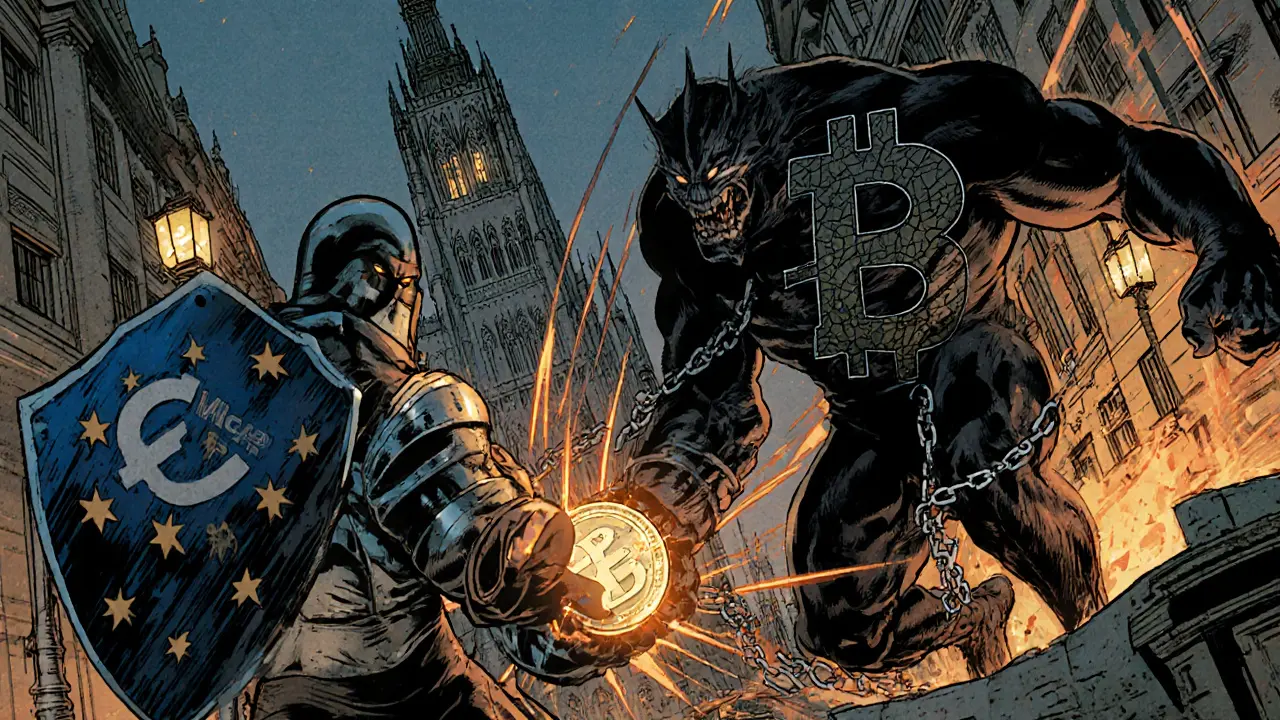EU’s USDT Ban Under MiCA: What It Means for Crypto Users
Explore why the EU banned USDT under MiCA, what the regulation demands, how exchanges responded, and which compliant stablecoins you can use today.
Read MoreWhen navigating European Union crypto, the set of rules, markets and projects that operate under the EU’s legal framework for digital assets. Also known as EU crypto, it shapes how investors, developers and regulators interact across the bloc. This space is evolving fast, and understanding the core pieces helps you avoid costly mistakes. The biggest driver right now is MiCA, the Markets in Crypto‑Assets regulation that standardises token issuance and service‑provider duties across EU member states. MiCA creates a unified playbook for everything from utility tokens to stablecoins, so a project that complies in France automatically meets the baseline in Germany or Spain.
First, European Central Bank, the EU’s monetary authority that monitors stablecoin impact on monetary policy has a direct say on how fiat‑backed stablecoins are treated, demanding full reserve backing and regular audits. Second, ESMA, the supervisory body that oversees crypto‑asset market transparency and investor protection enforces disclosure standards for token offerings, making sure retail investors see clear risk warnings. Third, the bloc’s Anti‑Money‑Laundering (AML) regulations, a set of KYC and transaction‑monitoring rules that crypto businesses must embed into their compliance stacks tighten the net on illicit flows and require detailed reporting to national authorities. Together these entities form a safety net: European Union crypto regulation encompasses MiCA, MiCA requires stablecoin issuers to hold reserves, and the European Central Bank influences crypto policy while ESMA enforces market transparency.
What does this mean for you? If you’re a trader, you’ll notice tighter KYC on exchanges and clearer fee structures that reflect EU consumer‑protection laws. If you’re a developer, the token‑design checklist now includes reserve‑proof for stablecoins, mandatory audit reports, and a required liaison with a registered AML‑compliant service provider. For investors, the new landscape promises more reliable price data, because ESMA‑mandated reporting reduces hidden‑order manipulation. And because MiCA applies uniformly, cross‑border projects can launch with a single legal opinion instead of juggling 27 national lawyers.
Below you’ll find a curated set of articles that dig deeper into each of these areas – from practical guides on meeting MiCA’s token‑issuance criteria, to step‑by‑step compliance with AML rules, and analysis of how the European Central Bank’s stance on stablecoins could shift market dynamics. Dive in to get actionable tips, real‑world examples, and the latest updates that keep you ahead in the EU crypto arena.

Explore why the EU banned USDT under MiCA, what the regulation demands, how exchanges responded, and which compliant stablecoins you can use today.
Read More